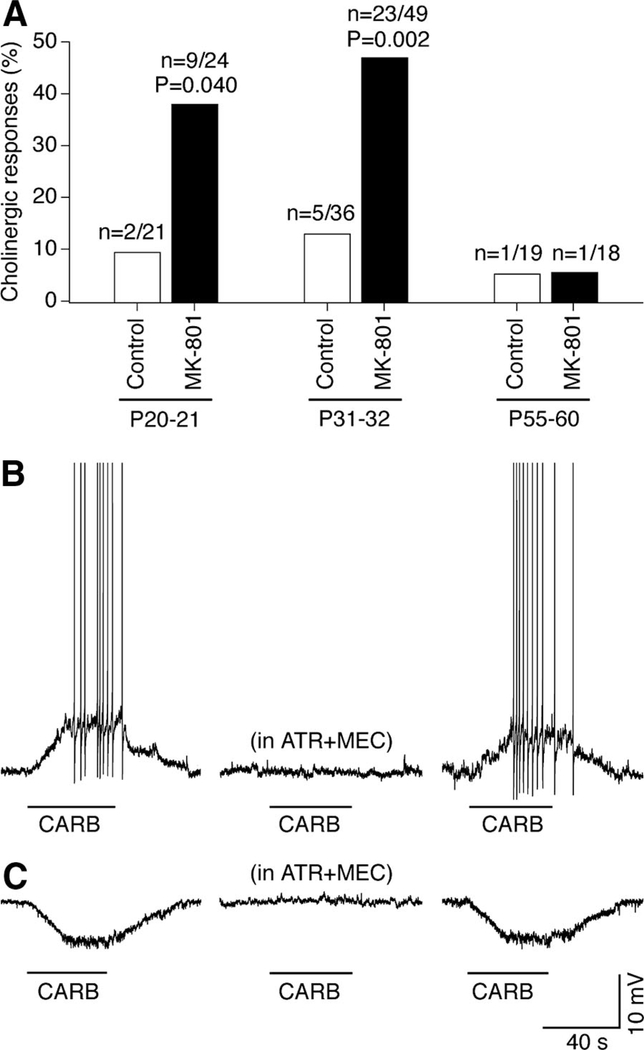FIG. 2.
Chronic MK-801 treatment in vivo increases cholinergic responsiveness in the rat hypothalamus. A: percentage of carbachol-responsive neurons in slices [data for SON and paraventricular nucleus (PVN) are combined; excitatory and inhibitory responses are combined; n = 167]. The number of responding neurons of the total number of neurons and statistical significance are shown. Statistical significance was calculated relative to the corresponding control using the Fisher’s exact probability test. B and C: representative traces for depolarizing (B) and hyperpolarizing (C) responses (SON; P32; MK-801–treated). Applications of carbachol (CARB) are indicated by bars. The sequence of carbachol tests (left to right): without, in the presence, and after washout of acetylcholine receptor (AChR) antagonists (ATR + MEC, atropine + mecamylamine).

